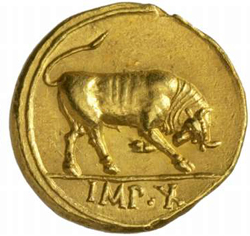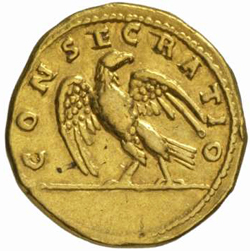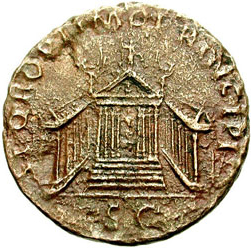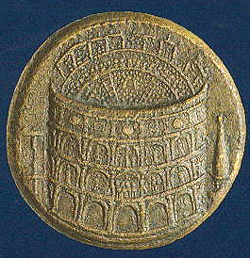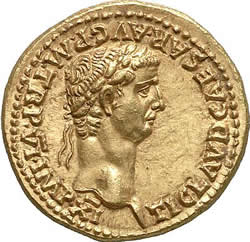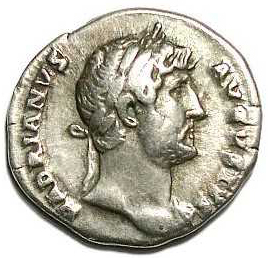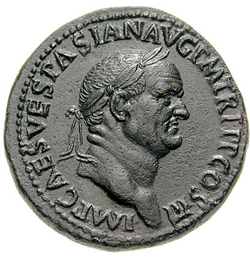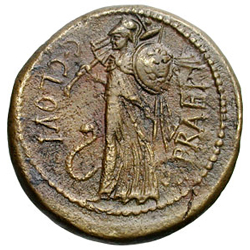|
Roman Coins
The Romans used coins throughout their empire and many thousands have been found. The Celts had coins too; both the Romans and the Celts got the idea from the Greeks, who invented coins around 600BC.
During the time of the empire, coins usually showed the emperor's head on one side and a picture on the other. Julius Caesar was the first to have his head on a coin, which was a shock to most Romans as this was an honour only given to gods. The pictures on coins can tell us a lot about the life and the beliefs of the Romans. Coins had inscriptions too, in Latin, usually abbreviated (meaning the words were shortened).
Coins were made of metals:
gold - a gold coin was called an aureus and was the most valuable coin.
silver - the next most valuable metal and coin was silver. A silver coin was called a denarius. One aureus was worth 25 denarii. A denarius was equal to about £10 today, and was roughly what a legionary (an ordinary soldier) got paid for one day.
brass - after the denarius was the sestertius, which was made of brass (a mix of copper and zinc). There were four sestertii to one denarius (so there were 100 sestertii to an aureus).
The next most valuable coin, the dupondius, was worth half a sestertius, and was also made of brass.
copper - the as was worth half a dupondius and was made of copper.
Pictures
On the other side from the emperor's head was a picture. There were many different types of picture, such as gods, animals, and buildings. Here are some examples:
the god Mercury
a bull
an eagle
a temple
the Colosseum (an amphitheatre) |
An aureus of Emperor Claudius
A denarius of Emperor Hadrian
A sestertius of Emperor Vespasian
A dupondius of Julius Caesar
An as of Emperor Nero
Inscriptions
Usually both sides of the coin had some Latin writing, with most words shortened to save space. On the side with the emperor's head it said his name and titles. Look at the gold coin of Claudius:
The inscription says: TI. CLAUD. AVG. P.M. TR.P. VI. IMP. XI
This stands for: Tiberius Claudius Augustus Pontifex Maximus Tribunicia Potestate 6 Imperator 11.
This is what it means: Tiberius Claudius Augustus was his name. Pontifex Maximus means the chief priest in Rome. Tribunicia Potestate 6 means he was tribune of the people for the sixth time (tribune was a special sort of ruler). Imperator 11 means he had been Emperor for eleven years.
Can you understand any of the words on the other coins?
This website tells you the meaning of most of the inscriptions on Roman coins.
|

